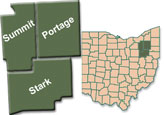

|

|

|

|

|

|

|

|

|

|


|
 |
Transit Center Fare and Load Management Equipment Package |
Description: |
This Equipment package provides the capability to accept collected data required to determine accurate ridership levels and implement variable and flexible fare structures. Support shall be provided for the traveler for use of a fare medium for all applicable surface transportation services, to pay without stopping, have payment media automatically identified as void and/or invalid and eligibility verified, and allow for third party payment. In addition, capability to provide expansion into other uses for payment medium such as retail and telephone and for off-line billing for fares paid by agencies shall be supported. This Equipment package also supports the capability for two-way voice communication between the transit vehicle driver and a facility, two-way data communication between the transit vehicles and a facility, sensor data to be transmitted from the transit vehicles to a facility, and data transmission from individual facilities to a central facility for processing/analysis if desired. These capabilities shall be provided through a workstation type processor with GUI, high capacity storage, ride share software housed in a building with dialup lines and wireline telephone and require integration with an existing Transit Center Tracking and Dispatch Equipment package.
|
||||||||||||||||||||||||||||||||||||||||||||||||||||||||||
Included in: |
GCRTA Administration METRO Administration METRO Dispatch Regional Smart Card Reconciliation Network |
||||||||||||||||||||||||||||||||||||||||||||||||||||||||||
Processes: |
|
||||||||||||||||||||||||||||||||||||||||||||||||||||||||||
User Service Requirements (fully or partially addressed): | |||||||||||||||||||||||||||||||||||||||||||||||||||||||||||
|
|||||||||||||||||||||||||||||||||||||||||||||||||||||||||||
| The detailed process and user service requirement traceability information on this page was extracted from the National ITS Architecture. Consult the National ITS Architecture web site for more information. | |||||||||||||||||||||||||||||||||||||||||||||||||||||||||||
 Web Spinner Technology.
Web Spinner Technology.